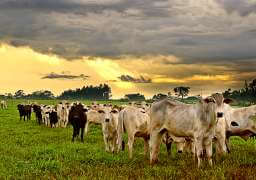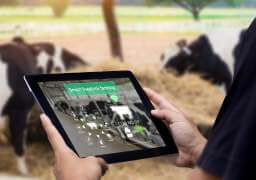In today’s increasingly unpredictable climate, large enterprises across industries such as insu...
Pioneering Sustainability: Integrating Livestock Parametric Insurance with Sustainable Loan Packages

In the face of climate change challenges, the agricultural sector, particularly livestock farming, stands as a vital player in Australia’s economy. However, with climate-related risks on the rise, farmers are facing increasing uncertainties about the future of their operations. To address these challenges, Australian banks should be pioneering innovative solutions that blend financial support with climate resilience measures. One such initiative is the integration of sustainable loan packages with livestock parametric insurance coverage.
Livestock parametric insurance represents a paradigm shift in risk management for farmers. Unlike traditional insurance, which often relies on cumbersome claims processes and subjective assessments, parametric insurance operates on predefined triggers, such as weather data. In the event of a trigger occurrence, farmers receive automatic payouts, providing swift financial relief precisely when they need it most.
The integration of sustainable loan packages with parametric insurance brings an added layer of resilience to livestock farmers. These packages offer financial support tailored to the unique needs of farmers while simultaneously protecting against climate-related losses in animal health and productivity. By bundling loans with parametric insurance, banks provide farmers with comprehensive risk management solutions that address both financial and environmental challenges.
Customisation is key in tailoring these packages to the specific needs of farmers. Premiums and coverage levels are adjusted based on the unique climate risks faced by each farmer, such as droughts, heatwaves, or disease outbreaks. By aligning insurance coverage with individual farm conditions, farmers are incentivised to adopt sustainable farming practices that enhance resilience to climate variability.
Moreover, the integration of climate data analytics platforms streamlines the insurance process, ensuring transparency and efficiency. Automated processes driven by real-time climate data enable swift claims processing, reducing administrative burdens on farmers and insurers alike. This transparency instills confidence in farmers, knowing that they have a reliable safety net in place to protect their livelihoods.
The benefits of integrating sustainable loan packages with parametric insurance extend beyond risk management. By incentivising sustainable farming practices, banks are fostering a culture of environmental stewardship within the agricultural community. Farmers who adopt sustainable practices not only mitigate climate risks but also contribute to broader environmental conservation efforts.
Furthermore, these initiatives align with Australia’s ambitious climate goals. By supporting the transition to sustainable agriculture, banks are helping to reduce emissions and build a more resilient food system. The integration of sustainable loan packages with parametric insurance represents a win-win scenario for farmers, banks, and the environment.
Looking ahead, the integration of sustainable finance solutions with parametric insurance is poised to play a pivotal role in shaping the future of agriculture. As climate change continues to pose challenges, innovative initiatives like these will be essential in building resilience and ensuring the long-term viability of Australia’s agricultural sector.
The integration of sustainable loan packages with livestock parametric insurance coverage represents an innovative approach to risk management in agriculture. By blending financial support with climate resilience measures, Australian banks are empowering farmers to navigate the uncertainties of a changing climate while fostering a culture of sustainability. As we look to the future, these initiatives will be instrumental in building a more resilient and sustainable agricultural sector for generations to come.








